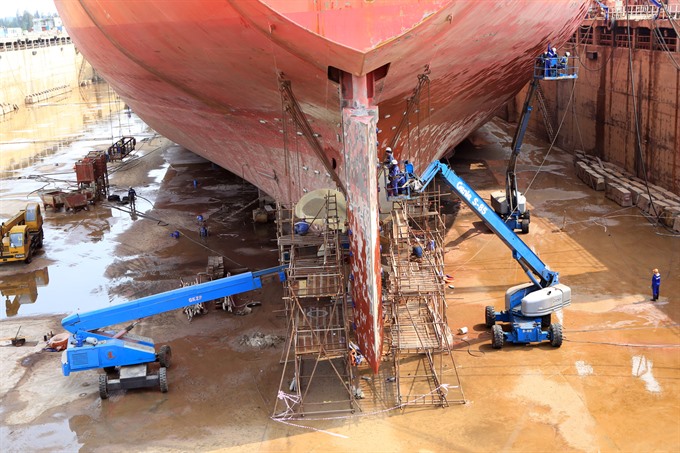 Economy
Economy

The Prime Minister recently issued a decision outlining solutions for loss-making projects under the management of the Ministry of Industry and Trade. The aim is to turn them into efficient projects by 2020, at the latest, or let them be dissolved.
 |
| Dung Quất Shipyard is among the loss-making projects to be restructured. — VNA/VNS Photo Huy Hùng |
HÀ NỘI — The Prime Minister recently issued a decision outlining solutions for loss-making projects under the management of the Ministry of Industry and Trade. The aim is to turn them into efficient projects by 2020, at the latest, or let them be dissolved.
According to the decision, the Government will not pump any additional budget capital in these projects and their handling would be market-based.
With regard to projects that cannot be turned around, the Government is determined to let them declare bankruptcy or be dissolved.
A key measure to handle such projects would be to sell stake to private investors.
Accordingly, all challenges faced by these projects must be resolved by 2020.
In addition, accountability would be determined to impose strict penalties.
The Government would review policies to develop markets for products manufactured under these projects, such as bio-fuel, fertilisers, steel and ships, as well as apply trade safeguard measures in line with Việt Nam’s international commitments.
Several tax regulations would be revised to promote local industrial production, while debts of these projects would be restructured to create conditions for them to borrow money from banks to revive their operation.
Regarding four fertiliser plants in Ninh Bình, Bắc Giang, Hải Phòng and Lào Cai, privatisation and divestment of State capital would be implemented after the projects recovered and moved towards efficient operation.
The project of bio-fuel plants in Quảng Ngãi and Bình Phước provinces was required to resume operations before the Việt Nam National Oil and Gas Group (PetroVietnam) divests from them. PetroVietnam would also withdraw capital from the bio-fuel plant in Phú Thọ Province.
Sale or bankruptcy
For Thái Nguyên Steel and Iron Plant’s expansion project’s phase 2, State capital divestment and restructuring of the company would be prioritised. If this measure was not successful, the project could be put up for sale or investment would be sought from outside investors.
Dung Quất Shipyard would be put up for sale or declare bankruptcy if the first option failed.
Similarly, Đình Vũ Polyester Plant would be privatised or sold. If that failed, it would declare bankruptcy.
Phương Nam Pulp Factory would speed up its debt restructuring and sale of assets and inventory.
Meanwhile, issues at the Quý Xa Mine and Lào Cai Steel and Iron Plant would be handled to enhance their efficiency.
The ministry’s statistics revealed that these projects incurred total losses of over VNĐ16 trillion (US$704.4 million) as of the end of 2016 on investment of VNĐ63.6 trillion ($2.8 billion), with loans accounting for some 75 per cent. — VNS




